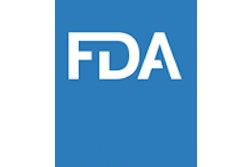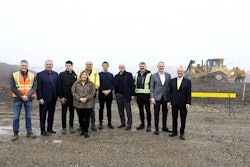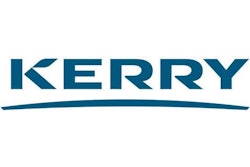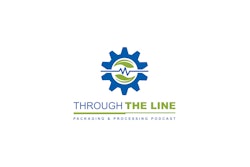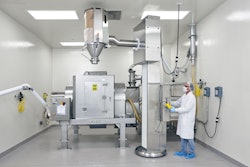After part one of our review of PACK EXPO covered trends and technologies focused on food processing and packaging at large, this episode of unPACKed with PMMI offers a pair of unique views from PMMI Media Group Editors. Keren Sookne from Healthcare Packaging provides updates on continuous manufacturing in the healthcare sector and Lilián Robayo from Mundo PMMI provides her view of top technologies applicable to her market in Latin America including the smart factory, digital enterprise and the digital factory.
To subscribe, rate, review, and find more unPACKED podcast episodes, visit pmmi.org/podcast or find us on Apple podcasts, Spotify, iHeart Radio or wherever you listen to your podcasts.
 | Read the full transcript below.
|
Sean Riley:
So, today we welcome two more editors to the pod, Lilián Robayo from Mundo PMMI, and Keren Sookne from Healthcare Packaging. Let's hear their unique takeaways, as Lilián views the show as a journalist from Latin America and Keren provides her perspective as an expert on the healthcare packaging sector.
Hi, and welcome to PACK EXPO International 2022's must-see technology and trends. I'm your host, moderator, Sean Riley, and we actually have our two furthest... Furthest? Yeah. Furthest traveling editors. So you guys are in for a special session here. We have Lilián Robayo, who works for us, for Mundo PMMI, which covers the Latin American market. She came all the way from Columbia. Welcome Lilián.
Lilián Robayo:
Thank you, Sean.
Sean Riley:
And Keren Sookne from Healthcare Packaging. She only came from California, so that's not-
Keren Sookne:
So it's really no big deal.
Sean Riley:
Yeah, that's not the same as Columbia at all. Anyway, we're just going to go over some of the things that they saw today and the main things that jumped out at them. They're both veterans of the show and veterans of covering the industry. So we're going to hit on what they saw here on day three of PACK EXPO. So Lilián, let's start with you. What things did you see that really jumped out as must-see?
Lilián Robayo:
Thank you, Sean. Great to be here and visited the woods here at different exhibits. I feel more and more like I'm gazing into the future and into the trends re-shaping our industry. And no doubt, digitalization and the so-called digital transformation, are the different packaging processes shown together with sustainability, one of the game changers, no doubt. I see digitalization as a trend very much present in many of the technologies being exhibited here at the companies. Big part of the conversation and part of improving efficiencies of the machines, the plants, and the industry as a whole. And it is showing why IoT Technologies will become more and more essential to keep packaging and processing operations; competitive and productive.
I have heard and seen at many of the booths, about the concept of smart factory, digital enterprise and the digital factory. And precisely, one of these digitalization technologies that caught my attention, was at the Crown's booth at the South Hall. Crown's are the supplier of filling and packaging lines for beverage and beverage industry and food producer is showcasing solutions, precisely for this digital factory, applied for the filling and packaging processes in each production sequence. Looking for benefits such as transparency of data for better performance of the packaging reliance, which is very important as an industry, 4.7 trend.
And although this tool has been present for a couple of years so far, this is more relevant than ever, at this digitalization trend. This new tool I'm talking about is called Share to Act performance, which is a cloud-based service. It's an IoT platform that allows CPGs to have live overview of the current status of a machine, while at the same time provides visualization of those most relevant KPIs for a particular production process. Crown states that the CPGs and the brands can with this tool pinpoint exactly what areas have unexplored and untapped potential before they keep expanding production lines to gain more productivity. And with this tech tool, the CPGs get a digital image for each of their machines, irrespective of the manufacturing involved.
It is a real time consolidation tool, as I said, that provides schematic overview of your production line, the status of the equipment, including a counter of the downtime of the machine, and also a GN diagram summarizing status information of the lead machine and a speed diagram based on the lead machine showing the number of units produced. I thought that was a great technology. Crown is saying it allows to optimize time, increase OE, in general, and rendering a general view of all the information of the machine with its KPI. Crown also says this digital cloud service tool Shared to Act is available worldwide, 24/7, and it doesn't matter where your company is located. Also says it helps or supports all the areas of productions, giving transparency for the operators, giving an overview for all your production process for supervisors and also it is a great tool for benchmarking for your management for better decision-making processes.
Sean Riley:
Very interesting. So from the healthcare perspective, Keren, you've been over in the west side for, I would imagine a lot of the show.
Keren Sookne:
My whole life, actually.
Sean Riley:
Your entire life actually, yes. If you came from California, you have been on the west side the entire time. I walked right into that. Anyway, what's happening over in the west building that you saw that really jumped out at you? Because sometimes we see that healthcare doesn't move as fast because of all the regulations, but you usually can read between the lines if you will.
Keren Sookne:
Definitely. So something that I'm excited about that I saw yesterday, basically, when you take say, an ibuprofen, you generally want it to be the correct weight, don't like it to be over underweight.
Sean Riley:
No, I would like my dosage to be sort of what the doctor intended, yes.
Keren Sookne:
Well yeah. I think most people could agree with that. In general, we do have capsule and tablet check wears. They do have a couple of drawbacks in that these conventional load cells in pharma truck wears, they do require the individual tablets to pause for a second. These load cells are also a bit... They are sensitive to vibration and obviously, on a busy production floor, vibration is quite par for the course. And so these machines are really heavy and we love a good capsule check wear. But I did see a technology that has some really good potential. So first of all, can you guys hear me okay? I just want to make sure. Cool. So this is Work Microwave, which is over in the west hall. They are a developer and manufacturer of RF electronics technologies and products based in Germany. And they showed the WORKsens FT-96 Pharmaceuticals Weight Measurement Sensor.
And so what's interesting about this, it's a sensor based on the microwave resonance method that can be integrated into filling machines directly. And so it's characterizing the weight of the capsules and tablets in continuous production systems. So where a traditional check wear needs the capsules to pause in order to weigh them. This is having the pills go through continuously. It's not sensitive to vibration and the actual sensor is quite small, so it can be stacked. I think one of the really interesting things is that because of its small size, it can be integrated into a filling machine, whereas generally a check wear is a separate machine at the end of a filling line. And so it can run at up to 15 capsules per channel per second. And it's a very compact unit, like I said, so stackable. The sensor also features a data acquisition platform attached to the sensor head.
So that's monitoring for changes in product properties. So you're basically allowed to detect if pharma tablets are fully intact, if they exhibit defects. You have the option to reject under or overweight capsules or cracked tablets. So I would definitely check that out if you get the chance. They are a finalist in the PACK EXPO International 2022 Technology Excellence Awards. So-
Sean Riley:
Very cool.
Keren Sookne:
... Just a little shout out there. And I think it also really has some good potential. We always hear about continuous manufacturing in pharma and something that's really still hindering the industry is that we need updated sensors, we need real time information. You can't just continue to process something continuously versus a batch and have something go wrong and not know that something is going wrong. You're wasting product, you're possibly delivering medicine that's not as efficacious. So we really need these updated sensors and this definitely has some potential there to really update and know what's happening on your line in-
Sean Riley:
In real time.
Keren Sookne:
... A really fast way. Yeah.
Sean Riley:
Is it something that you think would be able to be used outside of pharma as well if you're dealing with delicate snacks and things of that nature?
Keren Sookne:
Absolutely. Yeah. So it has the potential to pretty much measure anything as long as it's non-conductive. So definitely no metals, saline solutions are going to be a no-go for that. But yeah, it has a really wide range of potential possibilities for what it can measure.
Sean Riley:
So are you telling me there's metal and saline solution?
Keren Sookne:
No, saline is conductive because of its salt content.
Sean Riley:
Oh, okay. Because of the salt content. Thank you.
Keren Sookne:
For sure.
Sean Riley:
I needed that cleared up.
Keren Sookne:
Anytime.
Sean Riley:
What else did we see over there in the west hall? Anything else exciting?
Keren Sookne:
Well, I'm going to popcorn over to Lilián.
Sean Riley:
Okay.
Keren Sookne:
Because I think I... Yeah. I'm going to give her a little break.
Sean Riley:
You guys are working as a team and that's what I like to hear.
Lilián Robayo:
Thank you. Thank you, Keren. Yes, I actually saw two digital printing technologies that definitely captured my attention. And one is a new release by United Barcode Systems is a beauty here at PACK EXPO, it's a printer called APLink XRX. And they said it is taking coding to the next level. It is a higher resolution gray scale inject printer designed for direct coding of different type of surfaces, both porous and non-porous surfaces. And why do they say it's taking coding to the next level? They said first it reaches 1440 DPI of horizontal resolution for a higher contrast. The printhead is very flexible. It can be adjusted in all access, even placed diagonally to bring boxes carrying on an inclined conveyor. It reaches up to 250 meters per minute speed. And it's gray scale printing capabilities let clients differentiate elements. For instance, make QR codes darker and better defined while less relevant information is toned down, obviously saving ink and money.
This APLink XRX series printer uses artificial intelligence to avoid errors and it also integrates with peripherals in coders, and [inaudible 00:11:59], and UV-led curing lamps. It can be also linked and communicate with other printers or other series of this printer along the line. And it has a simple user interface to control every printing partner.
And last but not least, Sean, I saw another very interesting digital printing innovation. It is at the Atlantic Zeiser Croesia Group and stand. It is a very innovative system for full color, inline, direct, digital printer of flexible narrow web materials. This system allows brand owners and converters to capitalize on the advantages on all demand printing and last stage customization of web materials. Since even small batches can be printed efficiently and visually appealing. This system they say, helps has a Pro Flow inject technology for materials such as spoils or laminated flexibles that are used for pouches and standup pouches and tubes and flow wraps and stick backs. And as they put at this greater reduces effort of creating the [inaudible 00:13:10] adapting formats and qualifying of the lines. So overall it means lower costs, lower risk, lower product complexity, and validation effort. Also, Atlantic Zeiser says this digital line value is available inline, near-line, and offline versions. And definitely, that was something very interesting.
Sean Riley:
Very cool. Everything that you spoke of is all sticking to the let's get more product out, more efficiently, faster. Things that everybody is usually looking for.
Lilián Robayo:
Definitely, Sean.
Sean Riley:
Fantastic. Can I ask you now, Keren, if you saw anything else?
Keren Sookne:
You may.
Sean Riley:
Okay.
Did you see anything else out there?
Keren Sookne:
I did.
Sean Riley:
Could you share it with the public?
Keren Sookne:
You know what? I think I will, actually.
Sean Riley:
Thank you.
Keren Sookne:
So I know we don't have tons of time so I'm going to kind of rattle some things off. But first I really wanted to get to Schubert Additive Solutions part box 3D printer. And so in essence, it's basically a streaming 3D printer and customers are only paying for each printing hour. So you may have this in your facility, but you're only basically paying when you're using it. And so it has a lot of really interesting potential in terms of being able to print things as you need them right at the end of your line. They say from grippers to spare parts, it's streamed in their secure digital rights management and greatly reduces environmentally damaging and lengthy transport of new format parts. So say that a format part breaks on your line, you're able to just print a new one right there in real time versus either storing things in already crowded warehouses or waiting for a new format part to come in. So I definitely see a lot of potential in terms of making things more efficient. And I really like that model of just paying when you're using it versus-
Sean Riley:
That's very interesting.
Keren Sookne:
... The alternative.
Sean Riley:
And it's also... I didn't realize... I understand the way the 3D printer is making the parts to use on an as needed basis, but they will be able to be used in pharma because it's usually kind of a restrictive environment. So that's where the first question popped into my head.
Keren Sookne:
Yeah. So this is really applicable to any industry. I would certainly say that pharma can benefit from it in terms of format parts. Generally pharma doesn't make changes very quickly. And so anything that is really product contacting this would likely not be a good fit for, but I would check into it. But for the most part, when you're talking about production tooling, this might be a really good option for folks to be able to replace things if there's suddenly a defective tool or producing new format sets as you change your product offering. All right, and I know we're definitely running out of time, but.
Sean Riley:
I'm going to give you the last word.
Keren Sookne:
We have to talk a little bit about sustainability.
Sean Riley:
Always.
Keren Sookne:
Always. Especially in life sciences where things have been slower to adapt for really good reasons. I was just chatting with Kramer MHI and Keystone Folding Box, and they all said customers are basically really clamoring for sustainable upgrades. This is not just in the packaging itself with material reduction, but energy savings in the machinery. Everybody is looking to reduce. We all know at this point that it's reduce, reuse, recycle. Well, in pharma you barely reuse anything.
Sean Riley:
Yes.
Keren Sookne:
But we're always trying to reduce before we get into recycling. And actually, something that I thought was interesting is that customers have been coming back to look for existing sustainable packaging. So companies, suppliers that launched things a couple years ago at PACK EXPO, the pharma companies maybe passed by and said, "Oh, okay, that's interesting," and walked right on by 'cause they weren't ready for it yet. And now they're seeing this renewed effort in the life sciences community. And so these existing offerings are now getting a renewed push from customers.
Sean Riley:
It seems to me like... And again, we keep saying this about pharma and healthcare in general, it also might be one of those where they're kind of waiting to see if it sticks or if it is something that's going to be around that they can rely on.
Keren Sookne:
Yeah, I forget what the exact quote is, but it's something like everybody wants to be the fastest second one.
Sean Riley:
Yes. Exactly.
Keren Sookne:
Nobody wants to be the test case. So yeah, they were returning to things that were released prior. Just one thing that came up was a Keystone's Ecoslide, which is a child-resistant blister that helps to reduce plastic usage, but we also saw this week launching Tekni-Plex Healthcare's fully transparent, recyclable mid-barrier blister package, which is reported to be the world's first blister and living combination that is also transparent.
We've definitely been seeing a lot more blister offerings in the past, maybe year or two come out. So that one is new at the show. Also, Constantia has Perpetua Alta, which is a recycle-ready mono material barrier sache, that's a mouthful for pharmaceuticals and foods. And lastly, I'll mention Schreiner MediPharm. So they're coming out with more sustainable iterations of their pharma talk label and autoinjector label. And so really something that comes up and if you guys in the audience are looking for more sustainable upgrades to your packaging, something that everyone is looking for right now is the rentability on existing machines. Because I mean, it's not to say that we don't need new machines. We absolutely do. New machines offer some really great efficiency benefits. But at the same time, if you can make a change that still runs on your existing machines, that's obviously going to be... Have some pretty good sustainability benefits.
Sean Riley:
While also being more cost-effective than having to have the capital investment of an entirely new machine.
Keren Sookne:
Exactly. So yeah, pretty much every supplier I've talked to has said that that customers are asking if they can run XYZ material on their existing machine or they're having material suppliers themselves come up to them at the show... Or not so much at the show, but prior to it and have them run tests to make sure, "Hey, we're developing this great new sustainable material, but will it run on the machines that you guys have?" And so... Yeah, that's what I'm seeing.
Sean Riley:
The collaboration that we're looking for between materials and the machinery makers is exactly what we're looking for. So I would like to thank everyone that took their time to come here and join us. I want to thank Lilián again, and thank Karen for taking their time and sharing with us and enjoy the rest of the show.



